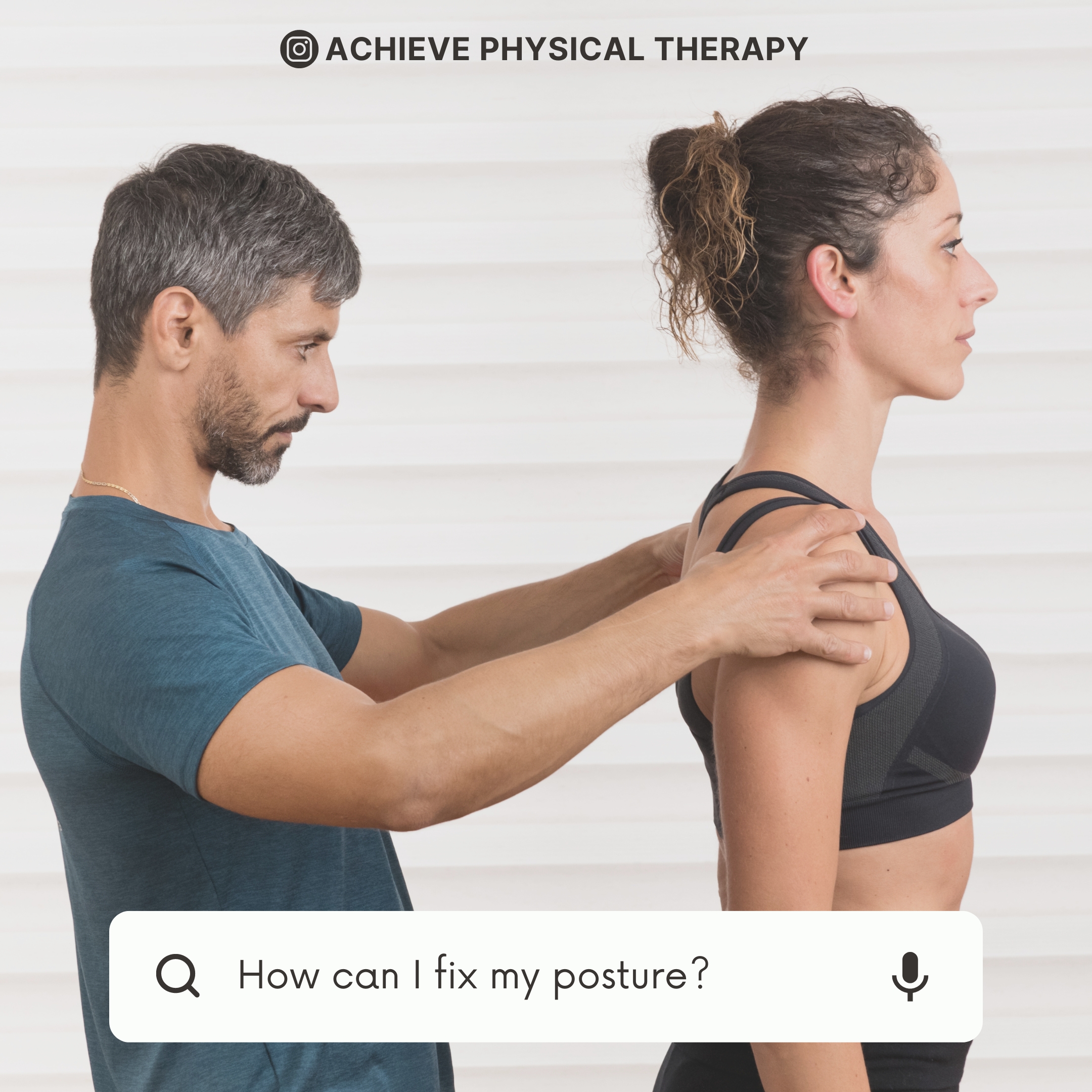
In our fast-paced, technology-driven world, the importance of maintaining good posture often gets overlooked. Many jobs require prolonged periods of sitting, contributing to muscle tension. Fortunately, with a few mindful adjustments to your daily routine, you can significantly improve your posture and overall well-being.
What Causes Bad Posture?
There are many reasons someone might develop poor posture.
- Muscle weakness
- Injury
- Stress or anxiety
- Technology use
- Genetics
- Footwear choice
What Are Some Impacts of Poor Posture?
Poor posture can significantly affect the body, leading to various health issues and discomfort. When the body is consistently slouching or hunched over, it puts a strain on our muscles and joints. This strain can lead to musculoskeletal imbalances, causing pain and discomfort in the neck, shoulders, back, and hips. Over time, poor posture can contribute to chronic conditions like
- Headaches
- Spinal dysfunction
- Back pain
- Joint degeneration
- Rounded shoulders
- Difficulty breathing
- Indigestion
- Potbelly
Why is Good Posture Important?
Maintaining good posture is crucial for several reasons, encompassing both physical health and overall well-being. Good posture will not only help us breathe easier, digest food more efficiently, but also help us feel more confident.
- Spinal Alignment: Good posture ensures that the spine is properly aligned.
- Muscle Efficiency: When you maintain a neutral spine position, muscles work in harmony to support the body. This reduces the strain on specific muscle groups and minimizes the likelihood of muscle imbalances and overuse injuries.
- Prevention of Joint Problems: When the body is aligned correctly, joints are in their optimal position, reducing the risk of wear and tear.
- Enhancing Breathing and Circulation: When the spine is aligned, the chest can expand fully, facilitating better oxygen intake.
- Improved Digestion: Maintaining an upright posture aids in proper digestion and prevents issues such as acid reflux. Slouching or poor posture after meals can compress the digestive organs and contribute to digestive discomfort.
Exercises that Help Improve Posture:
To begin, grab your workout clothes, open space, and some water to perform these exercises to help build your core and back muscles, lengthen your spine and stretch your body.
1. Cat and Cow Pose
Not only does the cat and cow pose help improve your posture, but it can also help relieve stress, calm the mind and improve coordination.
Here’s how:
- Start on all fours.
- Get into cat position by curling your shoulders downward and pushing your hips toward the ground to curve your back upward.
- Then, get into cow position by pushing your hips upward and your stomach toward the ground.
- Alternate between cat and cow post for one minute.
2. Pigeon Pose
If you tend to sit for long periods of time, your body will naturally build up tension in your back and hips. Pigeon pose is excellent to combat this as it helps open up your hip flexors and lower back muscles. A bonus: it also helps increase your flexibility and supports healthy digestion.
Here’s how:
- Begin in a downward-facing dog.
- Bring your right foot forward into a lunge position.
- Bring your right shin down to the ground, perpendicular to your body.
- Bring your left leg down flat on the ground.
- Hold the stretch for one minute, then repeat on the opposite leg.
3. Side Plank
Side planks help strengthen your core without putting too much stress and pressure on your lower back—the perfect move for correcting poor posture.
Here’s how:
- Lie on your side with your elbow on the ground under your shoulder to support your body.
- Push your hips and knees off of the ground.
- Hold this position for 10-30 seconds or longer if you’re comfortable, then repeat on the other side.
4. Crunches
Crunches are one of the most popular exercises for improving core strength needed for good posture, but they also help increase the mobility and flexibility of this muscle group.
Here’s how:
- Lie on your back with your feet on the floor, shoulder-width apart.
- Cross your arms over your chest or place them at your side.
- Sit up to engage your core muscles, then lie back down.
- Repeat for 4 sets of 10 to 20 reps.
Incorporating these simple yet effective exercises into your daily routine can help you stand up straight in no time.
For more workouts, you can do to improve your posture, click here.
Before starting any exercise routine it’s important to consult with your healthcare provider. Some patients will have limitations regarding range of motion, strength, and ability. If you know you need help, consult a physical therapist or a qualified fitness professional who can assess your posture and create a personalized exercise plan tailored to your needs and goals.
Improving your posture is a gradual process that requires consistent effort and mindfulness. By incorporating these tips into your daily routine, you’ll not only enhance your posture but also contribute to your overall health and well-being. Remember, small changes can lead to significant improvements, and the benefits of good posture extend beyond appearance to positively impact your physical and mental health. Start today, and take the first step towards a healthier, more upright you.
